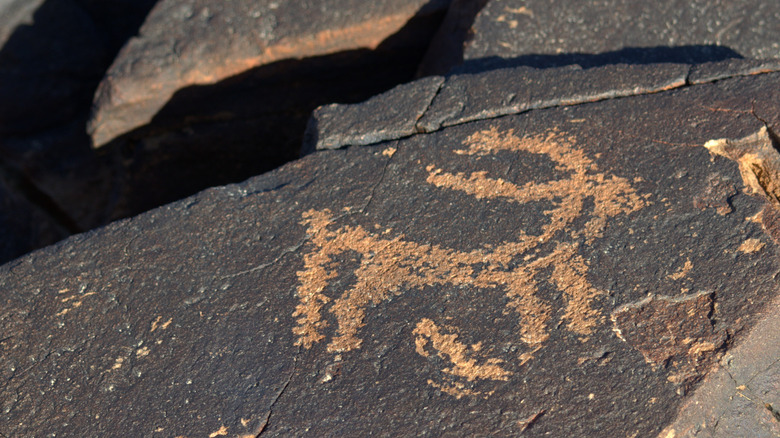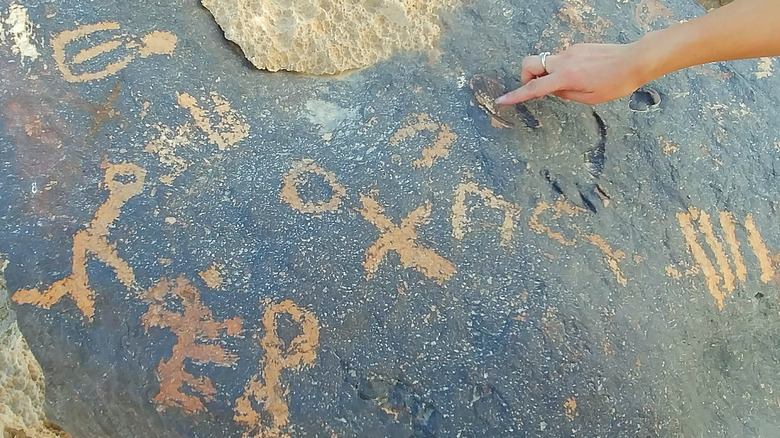Negev Desert Rocks Hold Drawings That Offer A Look At Life 6,000 Years Ago
Six millennia ago, a Nubian ibex stood in the highlands of the Negev Desert in Israel, and today the evidence is still in the rocks. Not in the form of a fossil specifically, but in a form of art. The ibex was observed by a human, who took the time to carve its likeness in the dark surface of the limestone. Six thousand years later, the image remains as part of the desert landscape, one of over 50,000 petroglyphs, or rock etchings in the Negev Desert.
According to Uzi Avne of the Dead Sea and Avana Science Center, the ibex carried meaning and symbolism for the people who depicted it in stone. Specifically the ibex symbolized life, death, and rebirth, Avne told Atlas Obscura in an interview. The animal also symbolized fertility. "It is always a male ibex and almost always in heat," archaeologist Lior Schwimer told Atlas Obscura of the ibex depictions which are common throughout the desert, even "in areas in the desert where ibexes never lived."
Glimpse of the past
The rock art was formed by chipping away the dark outer layer of limestone known as patina, to expose the lighter layer underneath, according to researchers at the Bradshaw Foundation. The images depict not only ibexes, but camels, horses, humans, and even ostriches. There are also Bedouin tribal symbols known as wusum, which were used to send messages of ownership or authority over an area or object, the Bradshaw Foundation reports.
Studying the petroglyphs helps shed light not only on the animals portrayed but on the people who portrayed them. "The older the carving is, we see a richer and more detailed artistic world," archaeologist Lior Schimer said in an interview with Atlas Obscura. "Drawing was a ritual activity at this point, the carver was trained for it, and the tribe assembled specifically to witness it."
Later carvings were done with different techniques and different purposes, with copper merchants reporting on their travels along the trade route, and Bedouin herders claiming territory by carving their symbols in strategic spots for all to see.
Across the Millenia
The oldest rock art in the Negev Desert is estimated to be around 6,000 years old, and the newest art extends almost into the present, depicting automobiles and airplanes, according to Atlas Obscura. "The carvers hold a dialogue with each other over millennia," archaeologist Davida Eisenberg-Degen told Atlas Obscura. "We see how people from different periods paint inside older carvings, or add symbols and animals beside them."
While the native ibex was portrayed in the oldest petroglyphs, it continued to be portrayed through time. As domestic new animals were introduced to the Negev Desert, they made appearances in the rock as well. Horses were introduced in the late Bronze Age, according to the Bradshaw Foundation, and though they were not well-suited to the desert, they are important in the art, especially in depictions of battles or hunts. Camels were newcomers in the Iron Age, around 3,000 years before the present, and are still found in the region today. To archeologists, the thousands of carvings are a well-documented local history. Archaeologist Lior Schwimer told Atlas Obscura, "[It's] a giant library in the middle of the desert."


